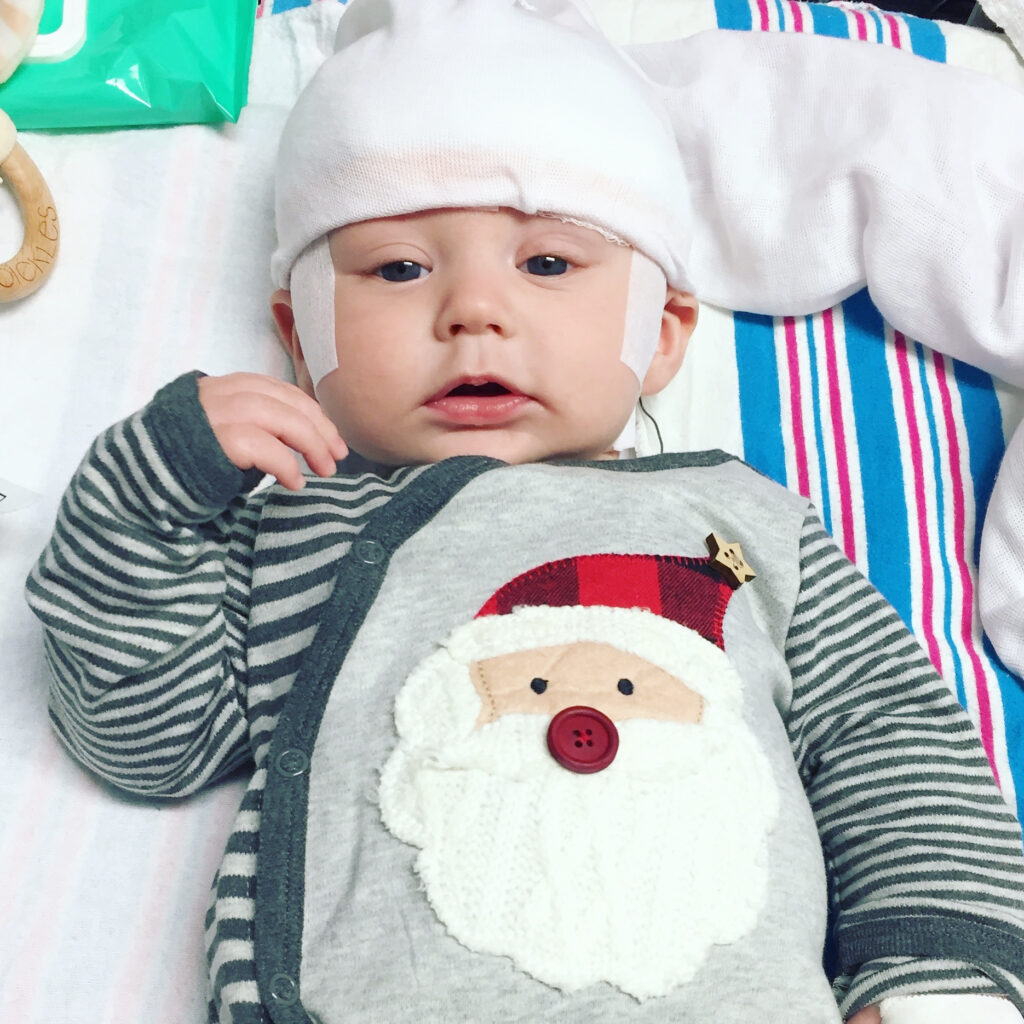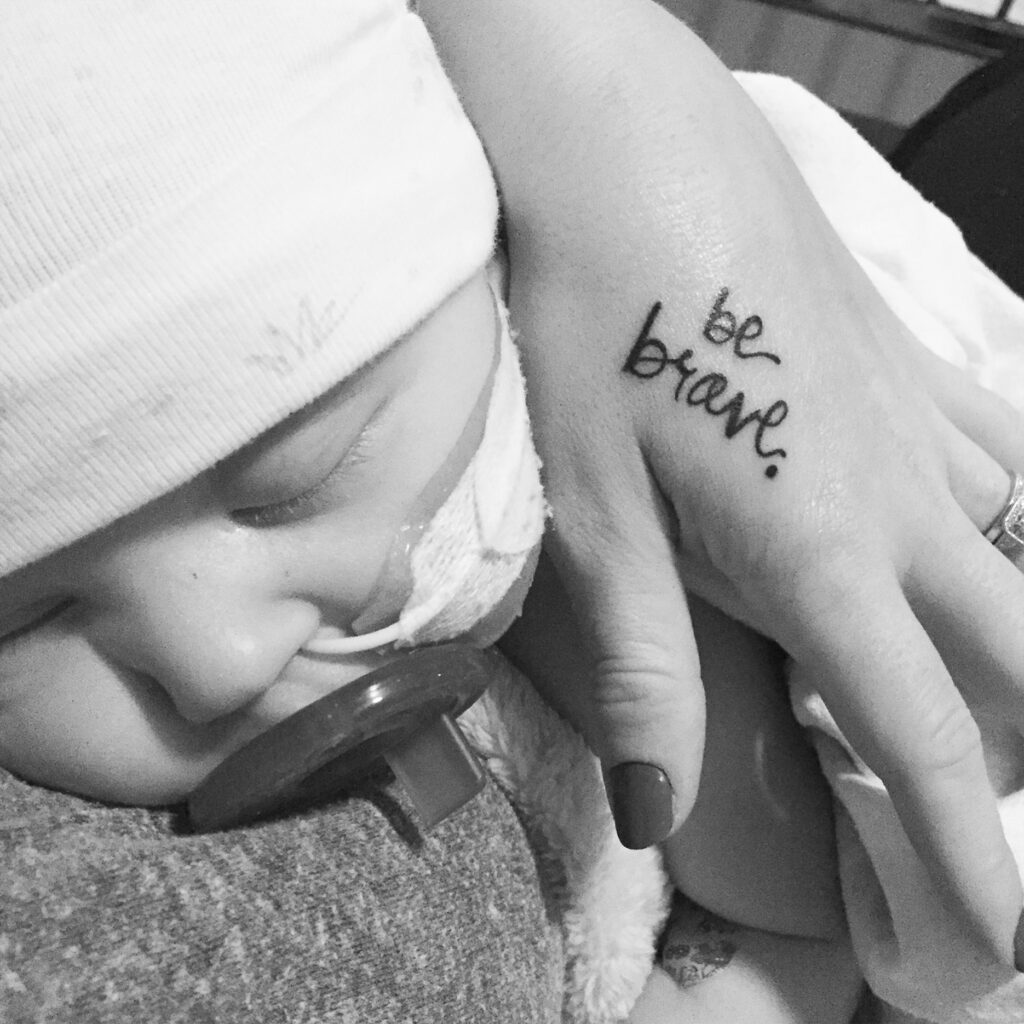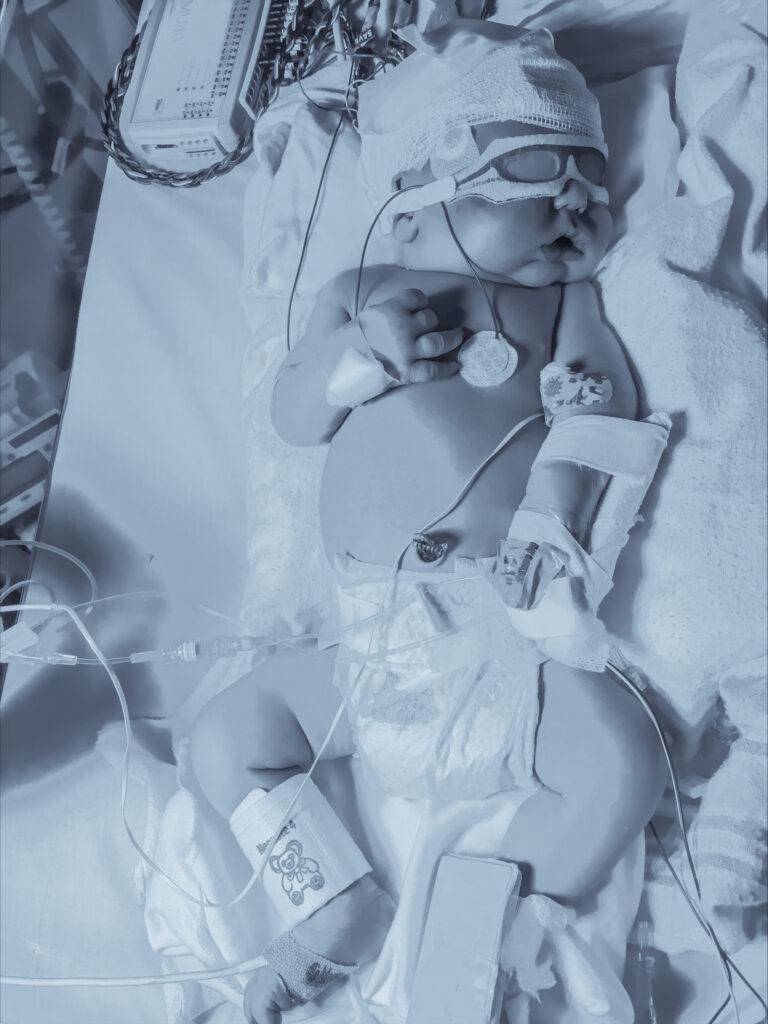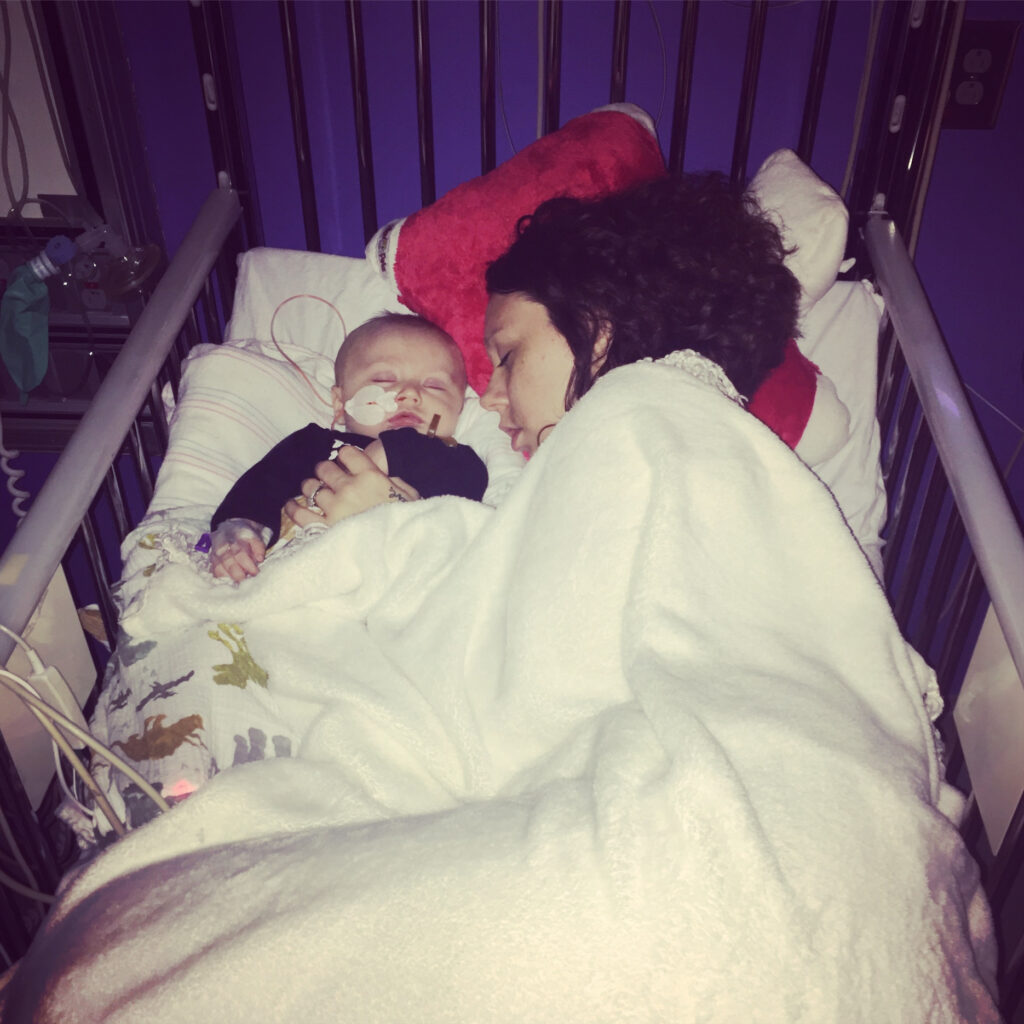

Jack was born seemingly healthy but fighting an invisible battle inside his little body. On Jack’s second day home from the hospital and fourth day of life, he started to become agitated in an abnormal and inconsolable way. Jack was my second child, and I was comfortable with babies, but this was a desperate wailing, a suffocating cry unlike anything I had heard before. He soon became rigid and refused to eat. Our initial concerns were brushed off as colic or possibly jaundice at the pediatrician appointment. However, later that evening Jack stopped crying and started seizing. I had no idea what I was looking at, but I knew my son was not okay. At five just days old, Jack was in status epilepticus (a dangerous condition in which epileptic seizures follow one another without recovery of consciousness between them). Our local hospital was unable to help Jack or even get home to stop seizing so he was life-flighted to the leading children’s hospital in our state. This was the first of many admissions for my newborn son and I was on pins & needles the entire stay.
Admitted to the PICU, Jack continued to seize without an obvious cause. There was a flood of white coats in my son’s hospital room; we saw neurology, genetics, infectious disease, GI, blood disorder doctors, etc. Opinions lit up like wildfire and spread before I even had the chance to process the reality of the situation. PICU Physicians started Jack on several different antibiotics to treat for Meningitis. It had not been confirmed that Jack had meningitis, but his CSF from his first LP was yellow in color. Forgetting he was also he was also receiving treatment for Jaundice at the time, the doctor panicked and threw the kitchen sink of antibiotics at Jack, meaning he had to get a PICC line placed. Jack did not have meningitis but instead was diagnosed with an HIE (hypoxic ischemic encephalopathy) a few days later after his brain was myelinated enough for his first MRI. We were told he had a significant brain injury, etiology unknown and unsearched for, and to prepare for a future with cerebral palsy and anti-epilepsy medications. It was presented in the most somber way as if our lives were over. This chaotic and upsetting initial hospitalization set the tone for Jack’s medical journey unfortunately. Looking back at myself, I see a doe-eyed and inexperienced mother who was completely unprepared for the harsh realities of rare disorders and epilepsy. And Jack’s misdiagnoses did not stop with the first few unfortunately.
It took almost six more months to figure out what was going on with my son. Jack was in and out of the hospital suffering from intractable seizures. He was too young and too small to have a rescue medicine administered at home in those first few months and his seizures were hard to control once they started so he was constantly at the hospital getting more anti-seizure meds added. By the time he was 11 weeks old, he was on Phenobarbital, Topamax, Keppra, Fosphenytoin, and STILL having seizures. During a particularly difficult hospitalization around 11-weeks-old, Jack began having gelastic and dacrystic seizures (aka terrifying laughing and crying seizures). These are straight out of your worst nightmares and most commonly associated with a certain type of brain tumor the doctors told us. Thus, Jack was rushed for a magnetic resonance spectroscopy or MRS, which is a diagnostic technique that uses an MRI scanner to examine the biochemical composition of brain tissue. Following this procedure, a neurologist (at a leading Children’s hospital in the US) diagnosed my son with Mitochondrial Disease and told us that she not only saw an injury to Jack’s brain, but she also saw atrophy that had begun to progress and would continue until he died. My husband asked if there was any hope for our infant son and the neurologist just looked at the ground and shook her head no. After this diagnosis, Jack was placed on palliative care, and we were told to “go home and love your baby for the time you have left”.


We would live in fear for the next few months as genetic panels were sent off to see if anything had been missed with Jack. We feared that every day would be our last with him and further feared that we would not emotionally recover from his death, and we still had another child counting on us. We were told to take Jack out of his interventions and therapies because any little bug he caught could kill him. And Jack was certainly sick; you could even say his brain was on fire. It was ablaze with a rare genetic and neurometabolic disorder that was overlooked for the first 6 months of his life. Then after 3 long months of living life holding our breaths (6 months total really), those labs results were in, and we could breathe again. Jack was FINALLY properly diagnosed with Pyridoxine-Dependent Epilepsy (PDE). The time lost to misdiagnoses and misdirection caused so much fear and pain in our entire family that it is impossible to express.
The delay in diagnosis most poignantly caused incredible struggles and significant developmental delays for my son as he had the skills of a newborn at 6 months old. He had to learn to do everything for the first time through multiple therapies and interventions each week throughout the first several years of his life. Soon after Jack was properly diagnosed and started treatment with Triple Therapy for PDE, a light we had never seen before came on in his eyes. Finally, our son was there. He was aware and looking back at us without with the fog of seizures clouding his eyes. Triple therapy is a treatment for PDE that combines pyridoxine, a lysine-restricted diet, and arginine supplementation. Because of his early struggles, Jack had a gtube placed as an infant and still has his gtube at 8-years-old. Along with this, he will always have lasting effects of a delayed Pyridoxine Dependent Epilepsy diagnosis. However, this is not the end of his journey so stay tuned for a comeback story fit for a crime fighting hero in a comic!


 Donate
Donate